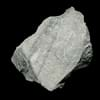Definition
Gneiss is a common and widely distributed type of rock formed by high-grade regional metamorphic processes from pre-existing formations that were originally either igneous or sedimentary rocks
Pegmatite rock is a holocrystalline, intrusive igneous rock which is composed of interlocking phaneritic crystals
Discoverer
Unknown
R. J. Hauy
Etymology
From the Middle High German verb gneist (to spark; so called because the rock glitters)
From Greek pegma, pegmat which means- thing joined together + -ite
Class
Metamorphic Rocks
Igneous Rocks
Sub-Class
Durable Rock, Hard Rock
Durable Rock, Hard Rock
Group
Not Applicable
Plutonic
Other Categories
Coarse Grained Rock, Medium Grained Rock, Opaque Rock
Coarse Grained Rock, Opaque Rock
Texture
Banded, Foliated, Platy
Pegmatitic
Color
Black, Brown, Pink, Red, White
Black, Brown, Cream, Green, Grey, Pink, Red, Rust, Silver, White, Yellow
Durability
Durable
Durable
Scratch Resistant
Yes
Yes
Appearance
Foliated
Layered, Banded, Veined and Shiny
Interior Uses
Countertops, Decorative Aggregates, Flooring, Interior Decoration
Decorative Aggregates, Flooring, Interior Decoration
Exterior Uses
As Building Stone, As Facing Stone, Garden Decoration, Paving Stone
As Building Stone, As Facing Stone, Paving Stone
Other Architectural Uses
Curbing
Curbing
Construction Industry
As Dimension Stone
As Dimension Stone, Building houses or walls, Construction Aggregate, for Road Aggregate, Landscaping
Medical Industry
Not Yet Used
Not Yet Used
Antiquity Uses
Artifacts
Artifacts, Sculpture, Small Figurines
Commercial Uses
Cemetery Markers, Jewelry, Tombstones, Used in aquariums
Creating Artwork, Jewelry, Source of corundum, tourmalines, beryls and topaz
Types
Augen Gneiss, Henderson Gneiss, Lewisian Gneiss, Archean and Proterozoic Gneiss.
Granite Pegmatite, Gabbro Pegmatite and Diorite Pegmatite
Features
Generally rough to touch, Is one of the oldest rock
Generally rough to touch, Is one of the oldest rock, Source of corundum, tourmalines, beryls and topaz
Archaeological Significance
Monuments
Used
Not Yet Used
Famous Monuments
Konark Sun Temple in India, Washington Monument, US
Not Applicable
Sculpture
Not Yet Used
Used
Famous Sculptures
Not Applicable
Data Not Available
Pictographs
Not Used
Not Used
Petroglyphs
Not Used
Not Used
Figurines
Not Yet Used
Used
Formation
Gneiss is a high grade metamorphic rock i.e. it has been subjected to higher temperatures and pressures than schist. It is formed by the metamorphosis of Gneiss forms from volcanic rock, shale or granitie.
Pegmatite rock is holocrystalline, intrusive igneous rock which is formed by partial melting and dewatering during the process of metamorphism.
Mineral Content
Biotite, Chlorite, Feldspar, Garnet, Graphite, Hornblade, Micas, Muscovite or Illite, Quartz, Quartzite, Silica, Zircon
Apatite, Beryl, Feldspar, Fluorite, Garnet, Lepidolite, Quartz, Silica, Spodumene, Topaz
Compound Content
Aluminium Oxide, NaCl, CaO, Iron(III) Oxide, FeO, Potassium Oxide, Magnesium Carbonate, MgO, MnO, Phosphorus Pentoxide, Silicon Dioxide, Titanium Dioxide
Aluminium Oxide, CaO, Iron(III) Oxide, FeO, Potassium Oxide, Magnesium Carbonate, MgO, Phosphorus Pentoxide
Types of Metamorphism
Impact Metamorphism
Burial Metamorphism, Cataclastic Metamorphism, Contact Metamorphism, Hydrothermal Metamorphism, Impact Metamorphism, Regional Metamorphism
Types of Weathering
Biological Weathering, Mechanical Weathering
Biological Weathering, Chemical Weathering, Mechanical Weathering
Types of Erosion
Chemical Erosion, Coastal Erosion, Sea Erosion
Chemical Erosion, Coastal Erosion, Glacier Erosion, Sea Erosion, Water Erosion, Wind Erosion
Grain Size
Medium to Coarse Grained
Medium to Coarse Grained
Fracture
Irregular
Conchoidal
Porosity
Very Less Porous
Less Porous
Luster
Dull
Grainy, Pearly and Vitreous
Specific Gravity
2.5-2.7
2.6-2.63
Transparency
Translucent to Opaque
Translucent to Opaque
Density
2.6-2.9 g/cm3
2.6-2.65 g/cm3
Resistance
Heat Resistant, Pressure Resistant, Scratch Resistant, Wear Resistant
Heat Resistant, Impact Resistant, Pressure Resistant
Deposits in Eastern Continents
Asia
China, India, Iran, Iraq, Kazakhstan, Kyrgyzstan, Mongolia, Russia
China, India, Iran, Japan, Nepal, North Korea, Russia, Saudi Arabia, South Korea
Africa
Cameroon, Ethiopia, Ghana, Kenya, Madagascar, Morocco, Mozambique, Namibia, Nigeria, Tanzania, Togo
South Africa
Europe
Albania, Austria, Bosnia and Herzegovina, Finland, France, Georgia, Germany, Hungary, Italy, Kosovo, Monaco, Norway, Poland, Romania, Serbia, Slovakia, Slovenia, Switzerland, Ukraine, United Kingdom
Austria, France, Greece, Ireland, Italy, Netherlands, Slovakia, Spain, Turkey, Ukraine
Others
Not Yet Found
Not Yet Found
Deposits in Western Continents
North America
Canada, Costa Rica, Cuba, Mexico, Panama, USA
Canada
South America
Argentina, Bolivia, Brazil, Chile, Colombia, Ecuador, Peru, Venezuela
Brazil
Deposits in Oceania Continent
Australia
New South Wales, New Zealand, Queensland, Victoria
New South Wales, Queensland, South Australia, Western Australia
All about Gneiss and Pegmatite Properties
Know all about Gneiss and Pegmatite properties here. All properties of rocks are important as they define the type of rock and its application. Gneiss belongs to Metamorphic Rocks while Pegmatite belongs to Igneous Rocks.Texture of Gneiss is Banded, Foliated, Platy whereas that of Pegmatite is Pegmatitic. Gneiss appears Foliated and Pegmatite appears Layered, Banded, Veined and Shiny. The luster of Gneiss is dull while that of Pegmatite is grainy, pearly and vitreous. Gneiss is available in black, brown, pink, red, white colors whereas Pegmatite is available in black, brown, cream, green, grey, pink, red, rust, silver, white, yellow colors. The commercial uses of Gneiss are cemetery markers, jewelry, tombstones, used in aquariums and that of Pegmatite are creating artwork, jewelry, source of corundum, tourmalines, beryls and topaz.










